Robin Bower's Blog, page 3
May 18, 2015
As you like it
 I was spending some time in Bali one year and had had enough of spruikers and people selling me everything from massages to surfing lessons to belly button rings. I was sick of the people, the noise and the traffic. To get away from the marauding tourists I decided to head up to Amed, a tiny fishing village on the east coast of Bali. I checked in to a hut on the beach. I could literally hear the waves washing up on the black lava stones of the volcanic beach. There was an adjacent eating hut where they played one James Blunt song on a loop. I didn’t want to talk to anyone. The only person I needed to talk to was the waitress serving my meals and the boatman when I booked my private snorkelling trip. Once on the boat, the boatman headed to a wreck he knew. I jumped in wallowing in the warm water. I snorkelled on the surface for a while and then dived down to get a closer look at the wreck. As I was coming up nearing the surface, I was met face to face with a man in a mask and snorkel trying to sell me an underwater camera.
I was spending some time in Bali one year and had had enough of spruikers and people selling me everything from massages to surfing lessons to belly button rings. I was sick of the people, the noise and the traffic. To get away from the marauding tourists I decided to head up to Amed, a tiny fishing village on the east coast of Bali. I checked in to a hut on the beach. I could literally hear the waves washing up on the black lava stones of the volcanic beach. There was an adjacent eating hut where they played one James Blunt song on a loop. I didn’t want to talk to anyone. The only person I needed to talk to was the waitress serving my meals and the boatman when I booked my private snorkelling trip. Once on the boat, the boatman headed to a wreck he knew. I jumped in wallowing in the warm water. I snorkelled on the surface for a while and then dived down to get a closer look at the wreck. As I was coming up nearing the surface, I was met face to face with a man in a mask and snorkel trying to sell me an underwater camera.*
Travel is fun, they say. Travel is to meet people, they say. Travel is to share experiences with as many people as possible, they say. I have to admit that I’m harbouring a nasty little secret. It’s something I’ve never shared with anyone before but I’m going to share it with you today.
I hate people on holiday.
I have been on young people’s holidays like Top Deck tours where hordes of us were all thrown together in a pot, mixed up and spat out at the end of three weeks. It seemed to be different then. There was pressure. You had to be sociable. You had to talk to people. It was expected. You had to remember names and appear to be interested in what the others were saying.
Travelling with strangers in a group is the most stressful thing you can do in the world. Living with people 24 hours a day, waking up to them, and knowing that you’ll see them all day every day for the next three weeks is something close to torture. Alcohol helped.
It’s got worse as I’ve got older.
Some people love a cruise. Not that there’s anything wrong with that. However, I believe this is the worst holiday in the world. I tried it once. It was around the time of the SARS bird flu epidemic — the Chinese ships couldn’t get any customers up near Hong Kong so they cut the cost in half and came down to Australia.
Here’s a recipe for disaster just waiting to happen:
· Take 2,000 passengers mostly of a certain age
· Stick them in tiny cabins with no windows
· Add a huge discount
· Throw in a storm at sea where everyone gets seasick
· Give them no sunbeds because they’ve all been claimed by towels
· Add all that to a floating shopping mall.
You’ve guessed that group tours are not for me. I can avoid those but I can’t avoid plane travel. Here’s another dirty little secret. I hate people who talk to me on planes. After years of travelling, I have some good strategies I’d like to share with you.
Take a large book — dust off War and Peacefrom your book shelves — and open at the appropriate moment (á la Macon Leary), put as much technology in front of you as you can fit, add headphones, watch movies, sleep — and if all else fails, alcohol helps.
Copyright 2015 Robin Bower
Robin's first novel, Beyond Home, is available now on Amazon.
PLEASE SIGNUP HERE FOR RELEASE DATES OF UPCOMING BOOKS
Published on May 18, 2015 20:39
Not everything about travelling is fun
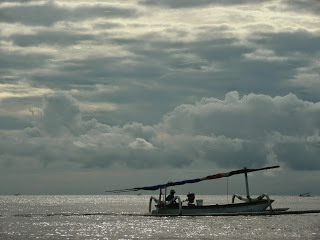 I was spending some time in Bali one year and had had enough of spruikers and people selling me everything from massages to surfing lessons to belly button rings. I was sick of the people, the noise and the traffic. To get away from the marauding tourists I decided to head up to Amed, a tiny fishing village on the east coast of Bali. I checked in to a hut on the beach. I could literally hear the waves washing up on the black lava stones of the volcanic beach. There was an adjacent eating hut where they played one James Blunt song on a loop. I didn’t want to talk to anyone. The only person I needed to talk to was the waitress serving my meals and the boatman when I booked my private snorkelling trip. Once on the boat, the boatman headed to a wreck he knew. I jumped in wallowing in the warm water. I snorkelled on the surface for a while and then dived down to get a closer look at the wreck. As I was coming up nearing the surface, I was met face to face with a man in a mask and snorkel trying to sell me an underwater camera.
I was spending some time in Bali one year and had had enough of spruikers and people selling me everything from massages to surfing lessons to belly button rings. I was sick of the people, the noise and the traffic. To get away from the marauding tourists I decided to head up to Amed, a tiny fishing village on the east coast of Bali. I checked in to a hut on the beach. I could literally hear the waves washing up on the black lava stones of the volcanic beach. There was an adjacent eating hut where they played one James Blunt song on a loop. I didn’t want to talk to anyone. The only person I needed to talk to was the waitress serving my meals and the boatman when I booked my private snorkelling trip. Once on the boat, the boatman headed to a wreck he knew. I jumped in wallowing in the warm water. I snorkelled on the surface for a while and then dived down to get a closer look at the wreck. As I was coming up nearing the surface, I was met face to face with a man in a mask and snorkel trying to sell me an underwater camera.*
Travel is fun, they say. Travel is to meet people, they say. Travel is to share experiences with as many people as possible, they say. I have to admit that I’m harbouring a nasty little secret. It’s something I’ve never shared with anyone before but I’m going to share it with you today.
I hate people on holiday.
I have been on young people’s holidays like Top Deck tours where hordes of us were all thrown together in a pot, mixed up and spat out at the end of three weeks. It seemed to be different then. There was pressure. You had to be sociable. You had to talk to people. It was expected. You had to remember names and appear to be interested in what the others were saying.
Travelling with strangers in a group is the most stressful thing you can do in the world. Living with people 24 hours a day, waking up to them, and knowing that you’ll see them all day every day for the next three weeks is something close to torture. Alcohol helped.
It’s got worse as I’ve got older.
Some people love a cruise. Not that there’s anything wrong with that. However, I believe this is the worst holiday in the world. I tried it once. It was around the time of the SARS bird flu epidemic — the Chinese ships couldn’t get any customers up near Hong Kong so they cut the cost in half and came down to Australia.
Here’s a recipe for disaster just waiting to happen:
· Take 2,000 passengers mostly of a certain age
· Stick them in tiny cabins with no windows
· Add a huge discount
· Throw in a storm at sea where everyone gets seasick
· Give them no sunbeds because they’ve all been claimed by towels
· Add all that to a floating shopping mall.
You’ve guessed that group tours are not for me. I can avoid those but I can’t avoid plane travel. Here’s another dirty little secret. I hate people who talk to me on planes. After years of travelling, I have some good strategies I’d like to share with you.
Take a large book — dust off War and Peacefrom your book shelves — and open at the appropriate moment (á la Macon Leary), put as much technology in front of you as you can fit, add headphones, watch movies, sleep — and if all else fails, alcohol helps.
Published on May 18, 2015 20:39
May 9, 2015
My self-publishing journey
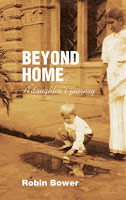 I published my first novel on Amazon Kindle at Christmas time 2014. This was the culmination of about five years’ work at some financial cost.
I published my first novel on Amazon Kindle at Christmas time 2014. This was the culmination of about five years’ work at some financial cost. Most aspiring authors want to know how to get published, make money so they can live in the south of France or a tropical paradise and write books while sipping on margaritas. Hey, I’ll put my hand up for that!Everyone should know that there’s a lot more to this game than that! I’m going to take you through the main steps of publishing a book, show the differences between commercial publishing and self-publishing, and look at the financial aspects — how much it costs and how much you can make. I want to inspire you to keep aiming for your dream — whichever way you want to publish.For the purpose of this post, I’ll talk about novels. A novel is generally defined as a fictional story of about 70-100,000 words.1. You first need an idea for a story. Inspiration is everywhere. And it’s very personal. You can get ideas from your own life, or your family and extended family. Think of events in your life or your parents’ lives that were interesting or unusual, and create a ‘what if’ scenario. This is what I did with my novel Beyond Home.
The story and characters are fictional but the seed for the idea germinated from the fact that my father was born in Rangoon (the descendant of a British Baptist missionary). He and his five sisters were brought up in Rangoon in the foothills of the Himalayas. He spent his early life there before the nationwide strikes tore the country apart and the family decided to go to England. It was only a few years later that Japan occupied Burma. By that time he was in boarding school in England.
I created a ‘what if’ scenario around this. What if my father had had another life I didn’t know about? And so it grew from there…
2. Writing is a lot more than putting words on a page. With fiction it is creating a story with characters, a plot, beginning, middle, end, climax, resolution and much more. The key to writing fiction is to ‘show not tell’ the story. For example: He was an old man.He was hunched and frail, his face lined with wrinkles.3. Find a mentor/developmental editor/writing group/course to help you write and stick to a word count per week or month. Getting a first draft is the goal. Your writing group or mentor can help read your work, review, comment and edit.
4. Once you have your fist draft, you can start self-editing and rewriting. For me, this is the hard part. It’s best to leave the work alone for a time to get distance from it. Go back and read it with new eyes. If you’re an editor as well as a writer –– the more time you leave it the better. You can then view it as someone else’s work and be unemotional in your editing. You can delete the many redundancies, repetitive words or scenes, delete adjectives and adverbs (thats) and words that do not serve the story or move it forward. You will add details where necessary. Be ruthless with tightening your writing –– if it doesn’t add to the story, it has to go.
5. Once you’ve done this a few times, it’s time to send it out to some intelligent readers. These can be friends or colleagues and associates who love reading and have a critical eye. It’s probably best to avoid family as they will tell you it’s wonderful no matter what! Take your readers’ feedback on board as much as possible and rewrite again.
6. Once you are happy with it, you can start preparing for publication. Find a manuscript assessor. They will advise on structure, characters, story, plot development, language, writing skills and all the big picture features. They generally give a report but do not mark up the manuscript. Take their feedback on board and rewrite again.
7. You are now ready to have your manuscript edited by a professional editor. The editor will advise on the same things as the assessor. The difference is that the editor will do a line edit/copy edit as well as a substantive/structural edit. The editor will comment on the use of language, copyright, defamation, fact-checking, double check research, authenticity of setting and story, timelines and character development, and give considered opinions on all aspects of the book. There may be several toings and froings at this stage.
8. Once you have finalised the edit, you are now ready to find a literary agent. An agent will take on work that suits their list and assess the author’s ability to write a product that sells. They will tout to their networks and find a publisher. They will negotiate contracts, advances and rights. They take about 12% of recommended retail price of every book you sell. There are 15 literary agents listed on the Australian literary agent website –– only some of these will be appropriate for your book. You must prepare an email pitch, then wait eight weeks for them to get back to you. They are generally not interested if you have submitted your book pitch to publishers, or to other literary agents.
9. The next step is finding a publisher. Some publishers will only accept submissions via a literary agent. For the others, you do a publisher pitch email and wait three months for them to let you know if they are interested. They don’t like authors submitting to more than one at a time. Let’s assume the literary agent finds a publisher for your book. The publisher will take over the production — editing, layout, book cover, sometimes choose the title, print run, marketing, launch, and sales to booksellers. You will still need to do some marketing yourself. They take about 45% of the sale price. After distribution, you as author get about 10%. Now for some statistics. For 2013 in Australia:· The main 30 big publishers released 100 books· 100 medium-sized publishers released 20–100 books· Nearly 30,000 books were released which includes small presses/independent publishers who may only publish one or two books a year. This means that many people are now self-publishing· One-third of all books are now eBooks· About 2% of all manuscripts submitted are published by traditional publishers.The figures aren’t encouraging; hence:10. If you can’t get an agent or publisher to take on your masterpiece, you can consider self-publishing.Why self-publish?
Twenty or so years ago, if we talked about self-publishing, it meant ‘vanity publishing’. A writer would hand the book over to a vanity press and pay for them to do minimal work on it, print it, and do some minimal marketing. Writers might also just send their book to a printer, pay the money and in return get thousands of copies of their book to store in the garage or somehow try to get bookshops to buy it. Writers, in general as most creatives, are not good at promoting themselves. Hence, the books were badly designed and edited (or not edited at all) and looked amateurish. Self-published work had a reputation for being under par and poor quality. Self-publishing had a stigma.I believe that has changed. Of course, there are still books out there that are not well written or look amateurish in their layout and covers — both self-published and traditionally published. But print-on-demand publishing has raised the standards for most self-publishers. These companies now offer subsidiary services such as editing and cover design so the opportunity to raise the standard of these books is now available.Many traditionally published authors are also turning to self-publishing to get higher incomes, and to be able to take total control of their product.
Process
After you’ve had the book edited, you can prepare it for release on Amazon Kindle as an eBook and a pBook. This is the process I followed:1. Have a final Word version ready 2. Design a cover — high resolution for print/low resolution for eBook, back cover blurb, author biography3. Get an ISBN/barcode4. Upload pBook first to Createspace (owned by Amazon) — inside text and cover5. Approve and release6. Then you do the Amazon Kindle process7. Upload inside text and low-resolution cover to Amazon8. Start promoting the book — send emails to your network, promote on social media, send press releases to writing organisations, newspapers, magazines, blogs, online news outlets9. Get reviews10. Keep promoting, keep writing11. Give presentations12. FOREVER.Costs to authorAs a rough guide, writing and producing my book took about five years and cost about $5,000. These were the rough costs:
· Mentor $2000· Manuscript assessment $600· Book cover $200· Complimentary and proof copies $500· Other bits and pieces — extra few dollars
Income for author· The bulk of authors make either nothing or less than $5,000· Mid-range authors $20-40,000 · A handful earn $100,000+· Self-published authors' median income $1–5,000· Commercially published authors' median income $5–10,000· Hybrid authors' median income $15–20,000(Source: Graeme Shimmon, commercially published author, Quora)Income for books on AmazonBooks sold for less than $2.99 have a 35% royalty payment.Books above $2.99 have a 70% royalty payment.But remember — the higher the price, the lower the sales
You need to sell at least 100 books a day to hit the charts and trigger Amazon's recommendation system.
I’m testing the market with my first book and slowly building a platform and niche audience with online promotion and marketing. It's only the start of a long journey.What’s the best piece of advice if you want to succeed? Never give up.
You can buy Beyond Home here or here.
Published on May 09, 2015 23:21
January 31, 2015
What's in a smile?
I am walking along marble floors surrounded by towering pillars. The rooms of this former palace are peopled with statues centuries old, created by artists long dead, but still living in our consciousness. On the walls hang works of art, each more beautiful than the one before, and the following more brilliant yet. I enter a main hall, magnificent in size but reduced in space by the hordes of people hovering around one small picture. The people are barricaded, forced to be distant from this one precious image, shielded behind glass. La Gioconda, known as the Mona Lisa, is famous for her enigmatic, billion-dollar smile.
I am tantalised by her smile but after a brief glimpse, I am forced aside by the horde waiting to be photographed with this priceless work of art acting merely as background. Long sticks protrude from the crowd, like alien insect antennas seeking food or light, carrying their image catcher atop. Any prop is used to get above the crowd for the closest picture possible. In front of the enigmatic smile, mysterious for centuries, the hordes from every part of the planet grin with gaping maws, wave, high five, peace sign and hang loose — reverence long gone in the search for cinematic permanence.
I notice that most of the paintings in the Louvre have subjects that, like the Mona Lisa, either are unsmiling or have only a pleasant turn of the lip. No big grins, no wide toothy smiles. In my early art training, I was taught never to paint a wide smile, and painting teeth was just wrong. If we view photography as an extension of art, painting portraits becomes photographing people. Seeing the masses with every type of camera and every pose, I ask myself ‘Why do we smile for the camera these days?’ When did that start to happen? I want to convince you that under no circumstances should you smile for a camera.
Painted portraits of the day were composed and dignified and mostly of aristocracy — a vast majority of portraits in this category are deemed ‘great’.
Reasons for not smiling could have been:
1. The subject of the painting had to sit for long periods of time so holding a pose was impossible. The artists’ expression was, ‘Say prune!’
2. Bad dental hygiene and consequent lack of confidence in smiling
3. Maybe they were just not happy!
Nicholas Jeeves in an article for online journal Public Domain Review states, ‘By the 17th century in Europe, it was a well-established fact that the only people who smiled broadly, in life and in art, were the poor, the lewd, the drunk, the innocent, and the entertainment.’
There are many famous and great paintings which illustrate these characters.
After the camera was invented around 1837, subjects still had to sit for a long time, and the non-smiling convention was already in practice.
But by about 1900 the $1 Kodak Brownie camera arrived allowing a photograph to be taken much more quickly. Early marketing showed people awash with huge grins which made everyone think about smiling for the camera. It was all about advertising a brand new fun product!
Hugely popular silent movies of the 1920s showed movie stars smiling; people started to copy.
A politician, possibly FD Roosevelt, started the expression ‘Say cheese’ to elicit a smile on the subject of a photograph.
Our modern personas need to look happy. ‘She’ll be right, mate’, ‘Good as gold’, ‘It’s all good’ — are favourite Aussie expressions.
It’s now accepted that we should look happy no matter what; we try not to reveal that we are sad, depressed, anxious, stressed — even though millions of Australians suffer from depression each year.
We use a smile as an artifice, a mask.
Why not show yourself as that authentic person behind the mask. I urge you to make your character visible, display your vulnerability, fears and doubts. Just show your face.
Now everyone — say ‘Prune’!
I am tantalised by her smile but after a brief glimpse, I am forced aside by the horde waiting to be photographed with this priceless work of art acting merely as background. Long sticks protrude from the crowd, like alien insect antennas seeking food or light, carrying their image catcher atop. Any prop is used to get above the crowd for the closest picture possible. In front of the enigmatic smile, mysterious for centuries, the hordes from every part of the planet grin with gaping maws, wave, high five, peace sign and hang loose — reverence long gone in the search for cinematic permanence.
I notice that most of the paintings in the Louvre have subjects that, like the Mona Lisa, either are unsmiling or have only a pleasant turn of the lip. No big grins, no wide toothy smiles. In my early art training, I was taught never to paint a wide smile, and painting teeth was just wrong. If we view photography as an extension of art, painting portraits becomes photographing people. Seeing the masses with every type of camera and every pose, I ask myself ‘Why do we smile for the camera these days?’ When did that start to happen? I want to convince you that under no circumstances should you smile for a camera.
Painted portraits of the day were composed and dignified and mostly of aristocracy — a vast majority of portraits in this category are deemed ‘great’.
Reasons for not smiling could have been:
1. The subject of the painting had to sit for long periods of time so holding a pose was impossible. The artists’ expression was, ‘Say prune!’
2. Bad dental hygiene and consequent lack of confidence in smiling
3. Maybe they were just not happy!
Nicholas Jeeves in an article for online journal Public Domain Review states, ‘By the 17th century in Europe, it was a well-established fact that the only people who smiled broadly, in life and in art, were the poor, the lewd, the drunk, the innocent, and the entertainment.’
There are many famous and great paintings which illustrate these characters.
After the camera was invented around 1837, subjects still had to sit for a long time, and the non-smiling convention was already in practice.
But by about 1900 the $1 Kodak Brownie camera arrived allowing a photograph to be taken much more quickly. Early marketing showed people awash with huge grins which made everyone think about smiling for the camera. It was all about advertising a brand new fun product!
Hugely popular silent movies of the 1920s showed movie stars smiling; people started to copy.
A politician, possibly FD Roosevelt, started the expression ‘Say cheese’ to elicit a smile on the subject of a photograph.
Our modern personas need to look happy. ‘She’ll be right, mate’, ‘Good as gold’, ‘It’s all good’ — are favourite Aussie expressions.
It’s now accepted that we should look happy no matter what; we try not to reveal that we are sad, depressed, anxious, stressed — even though millions of Australians suffer from depression each year.
We use a smile as an artifice, a mask.
Why not show yourself as that authentic person behind the mask. I urge you to make your character visible, display your vulnerability, fears and doubts. Just show your face.
Now everyone — say ‘Prune’!
Published on January 31, 2015 22:29
•
Tags:
art, creative-non-fiction
What's in a smile?
I am walking along marble floors surrounded by towering pillars. The rooms of this former palace are peopled with statues centuries old, created by artists long dead, but still living in our consciousness. On the walls hang works of art, each more beautiful than the one before, and the following more brilliant yet. I enter a main hall, magnificent in size but reduced in space by the hordes of people hovering around one small picture. The people are barricaded, forced to be distant from this one precious image, shielded behind glass. La Gioconda, known as the Mona Lisa, is famous for her enigmatic, billion-dollar smile.

I notice that most of the paintings in the Louvre have subjects that, like the Mona Lisa, either are unsmiling or have only a pleasant turn of the lip. No big grins, no wide toothy smiles. In my early art training, I was taught never to paint a wide smile, and painting teeth was just wrong. If we view photography as an extension of art, painting portraits becomes photographing people. Seeing the masses with every type of camera and every pose, I ask myself ‘Why do we smile for the camera these days?’ When did that start to happen? I want to convince you that under no circumstances should you smile for a camera.


 Painted portraits of the day were composed and dignified and mostly of aristocracy — a vast majority of portraits in this category are deemed ‘great’.
Painted portraits of the day were composed and dignified and mostly of aristocracy — a vast majority of portraits in this category are deemed ‘great’.
Reasons for not smiling could have been:
1. The subject of the painting had to sit for long periods of time so holding a pose was impossible. The artists’ expression was, ‘Say prune!’
2. Bad dental hygiene and consequent lack of confidence in smiling
3. Maybe they were just not happy!
Nicholas Jeeves in an article for online journal Public Domain Review states, ‘By the 17th century in Europe, it was a well-established fact that the only people who smiled broadly, in life and in art, were the poor, the lewd, the drunk, the innocent, and the entertainment.’
There are many famous and great paintings which illustrate these characters.
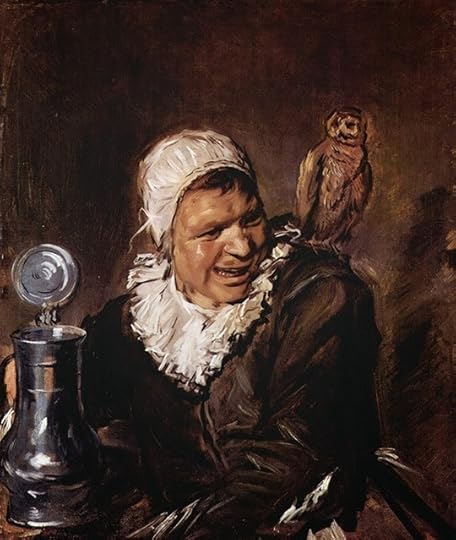

 After the camera was invented around 1837, subjects still had to sit for a long time, and the non-smiling convention was already in practice.
After the camera was invented around 1837, subjects still had to sit for a long time, and the non-smiling convention was already in practice.
But by about 1900 the $1 Kodak Brownie camera arrived allowing a photograph to be taken much more quickly. Early marketing showed people awash with huge grins which made everyone think about smiling for the camera. It was all about advertising a brand new fun product!

 Hugely popular silent movies of the 1920s showed movie stars smiling; people started to copy.
Hugely popular silent movies of the 1920s showed movie stars smiling; people started to copy.
A politician, possibly FD Roosevelt, started the expression ‘Say cheese’ to elicit a smile on the subject of a photograph.
Our modern personas need to look happy. ‘She’ll be right, mate’, ‘Good as gold’, ‘It’s all good’ — are favourite Aussie expressions.
It’s now accepted that we should look happy no matter what; we try not to reveal that we are sad, depressed, anxious, stressed — even though millions of Australians suffer from depression each year.
We use a smile as an artifice, a mask.
Why not show yourself as that authentic person behind the mask. I urge you to make your character visible, display your vulnerability, fears and doubts. Just show your face.
 Now everyone — say ‘Prune’!
Now everyone — say ‘Prune’!

I notice that most of the paintings in the Louvre have subjects that, like the Mona Lisa, either are unsmiling or have only a pleasant turn of the lip. No big grins, no wide toothy smiles. In my early art training, I was taught never to paint a wide smile, and painting teeth was just wrong. If we view photography as an extension of art, painting portraits becomes photographing people. Seeing the masses with every type of camera and every pose, I ask myself ‘Why do we smile for the camera these days?’ When did that start to happen? I want to convince you that under no circumstances should you smile for a camera.


 Painted portraits of the day were composed and dignified and mostly of aristocracy — a vast majority of portraits in this category are deemed ‘great’.
Painted portraits of the day were composed and dignified and mostly of aristocracy — a vast majority of portraits in this category are deemed ‘great’.Reasons for not smiling could have been:
1. The subject of the painting had to sit for long periods of time so holding a pose was impossible. The artists’ expression was, ‘Say prune!’
2. Bad dental hygiene and consequent lack of confidence in smiling
3. Maybe they were just not happy!
Nicholas Jeeves in an article for online journal Public Domain Review states, ‘By the 17th century in Europe, it was a well-established fact that the only people who smiled broadly, in life and in art, were the poor, the lewd, the drunk, the innocent, and the entertainment.’
There are many famous and great paintings which illustrate these characters.


 After the camera was invented around 1837, subjects still had to sit for a long time, and the non-smiling convention was already in practice.
After the camera was invented around 1837, subjects still had to sit for a long time, and the non-smiling convention was already in practice.But by about 1900 the $1 Kodak Brownie camera arrived allowing a photograph to be taken much more quickly. Early marketing showed people awash with huge grins which made everyone think about smiling for the camera. It was all about advertising a brand new fun product!

 Hugely popular silent movies of the 1920s showed movie stars smiling; people started to copy.
Hugely popular silent movies of the 1920s showed movie stars smiling; people started to copy.A politician, possibly FD Roosevelt, started the expression ‘Say cheese’ to elicit a smile on the subject of a photograph.
Our modern personas need to look happy. ‘She’ll be right, mate’, ‘Good as gold’, ‘It’s all good’ — are favourite Aussie expressions.
It’s now accepted that we should look happy no matter what; we try not to reveal that we are sad, depressed, anxious, stressed — even though millions of Australians suffer from depression each year.
We use a smile as an artifice, a mask.
Why not show yourself as that authentic person behind the mask. I urge you to make your character visible, display your vulnerability, fears and doubts. Just show your face.
 Now everyone — say ‘Prune’!
Now everyone — say ‘Prune’!
Published on January 31, 2015 00:32
December 13, 2014
Once upon a time ...
 Everyone loves a good story. Whether it's a shaggy dog story over a campfire, a joke at a dinner party, a poem, a song, or a memoir, and … we all have a story to tell. This has been happening for centuries. Many Indigenous cultures especially have a strong oral tradition. But what makes a good story? We all know it must have a beginning, a middle and an end, but there must also be a hero, a villain, a goal and a struggle. In fact, don’t these elements make up all stories?
Everyone loves a good story. Whether it's a shaggy dog story over a campfire, a joke at a dinner party, a poem, a song, or a memoir, and … we all have a story to tell. This has been happening for centuries. Many Indigenous cultures especially have a strong oral tradition. But what makes a good story? We all know it must have a beginning, a middle and an end, but there must also be a hero, a villain, a goal and a struggle. In fact, don’t these elements make up all stories?Way back in 1928, a Russian scholar named Vladimir Propp studied 1000 Russian folk tales and discovered that they were all based on 31 narrative themes or 'narratemes', and they all had a set of eight broad character types.

 I won't go into the 31 narratemes in detail, but this is generally what happens: the hero leaves home to go on a quest to solve a problem or find something, meets some helpers and a couple of villains on the way, gains a skill to help him, resolves the problem, confronts the villain and wins the princess. Yes ladies, most of the time we are just the reward (however, see
Frozen
for an unexpected slant on love…).
I won't go into the 31 narratemes in detail, but this is generally what happens: the hero leaves home to go on a quest to solve a problem or find something, meets some helpers and a couple of villains on the way, gains a skill to help him, resolves the problem, confronts the villain and wins the princess. Yes ladies, most of the time we are just the reward (however, see
Frozen
for an unexpected slant on love…).Anyway, here are Propp’s eight broad character types:HeroHelperVillainFalse heroDonorDispatcherPrincessPrincess’s father
Not all stories contain all of these character types, so let’s have a look at Shrek and Star Wars to see how they compare:


In Shrek:Hero — Shrek needs to solve the crime behind why the fairytale creatures are illegally camping outside his swamp.
In Star Wars:
Hero — Luke Skywalker’s mission is to save Princess Leia, discover his true parentage and save the empire.

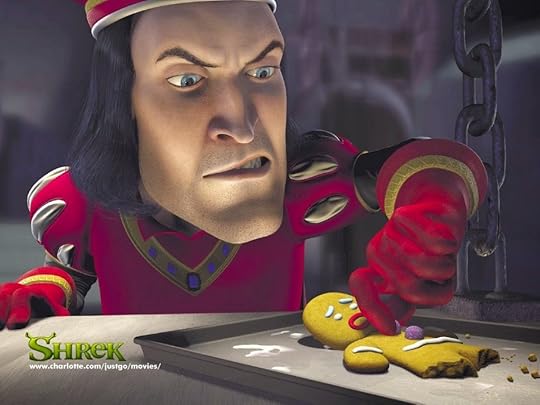
In Shrek:Villain — Lord Farquaad cast out the fairytale creatures to Shrek's swamp. He sends Shrek to rescue his princess from the castle and as a reward, he will give Shrek his swamp back exactly how it was.
In Star Wars:Villain — Darth Vader kills Luke’s uncle and aunt and leaves him without a family.



In Shrek:Princess — Princess Fiona is saved by Shrek from the castle, she believes he is her prince for saving her, but he tells her that Lord Farquaad will be her prince. She finds out that Shrek is an ogre.
In Star Wars:Princess — Princess Leia is rescued by Luke but as they turn out to be siblings, she ends up with Han Solo.
In Shrek:
Helpers — Donkey and Puss accompany Shrek throughout the journey to help him rescue the princess.

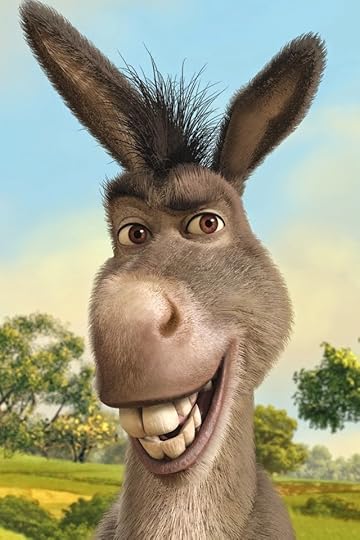
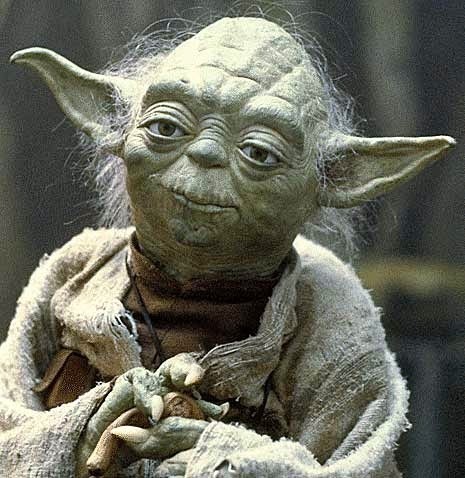
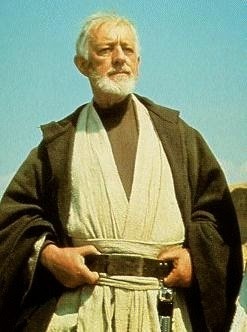
In Star Wars:Helpers — Han Solo, Chewbacca, C3PO, R2D2
In Shrek:
Donor — this is not a person but a magical dragon that helps stops the wedding of Lord Farquaad and Fiona when Shrek realises he loves her; he then finds out that she is an ogre too.
In Star Wars:
Donor — Obi-Wan gives Luke the light sabre, connecting him to the force and confirming him as a Jedi warrior.


In Shrek:
False hero — Lord Farquaad is also the false hero because he earned the princess even though he had to get Shrek to complete the mission and save her from the castle; however, Shrek and Fiona end up in love.
In Star Wars:False hero — Han Solo assumes the role of the hero but is unable to complete the mission.
Although the stories of Shrek and Star Wars seem very different at first look, they have very similar character types and follow the same story arc discovered by Vladimir Propp in 1928.
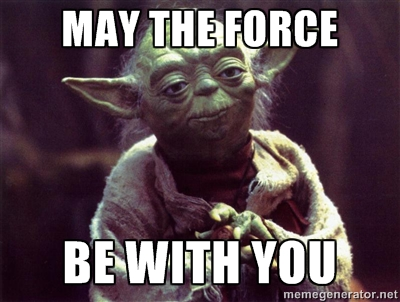
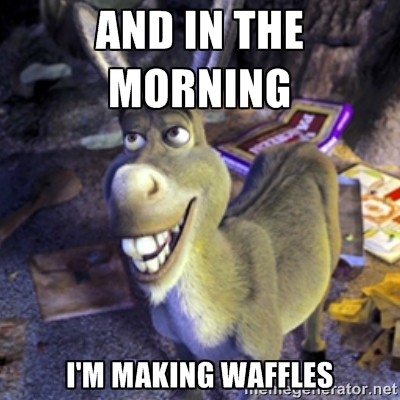
Copyright 2014 Robin Bower
Robin's first novel, Beyond Home, is available now on Amazon.
PLEASE SIGNUP HERE FOR RELEASE DATES OF UPCOMING BOOKS
Published on December 13, 2014 21:59
July 23, 2014
The view from above
 I looked down over the ancient Italian city of Vicenza. The helicopter was flying over the outskirts of the old town, where the dense street of cobbles and hills stretched out to spaces filled with green fields, grand old homes atop hills, and churches with steeples reaching to the sky. It was so close, I could almost touch it. It was exhilarating, terrifying and it was a gift.
I looked down over the ancient Italian city of Vicenza. The helicopter was flying over the outskirts of the old town, where the dense street of cobbles and hills stretched out to spaces filled with green fields, grand old homes atop hills, and churches with steeples reaching to the sky. It was so close, I could almost touch it. It was exhilarating, terrifying and it was a gift.  This trip to Italy was a highlight wedged between reporting on the diamond bourse in Antwerp, and writing a profile of the richest Chinese jewellery business in Singapore. I loved it.But how did I manage to leave my low-paid job as an academic book editor in Melbourne to get here?And how many young Australians are leaving these shores to seek work in foreign domains?The Australian diasporaThe Department of Immigration and Citizenship states that there are 1 million Australians working overseas at any one time.In 2012, there were 8 million departures with over 350,000 Australians leaving Australia with the intention of never coming back. The Department anticipates that 80,000 of those will see that dream realised.
This trip to Italy was a highlight wedged between reporting on the diamond bourse in Antwerp, and writing a profile of the richest Chinese jewellery business in Singapore. I loved it.But how did I manage to leave my low-paid job as an academic book editor in Melbourne to get here?And how many young Australians are leaving these shores to seek work in foreign domains?The Australian diasporaThe Department of Immigration and Citizenship states that there are 1 million Australians working overseas at any one time.In 2012, there were 8 million departures with over 350,000 Australians leaving Australia with the intention of never coming back. The Department anticipates that 80,000 of those will see that dream realised.Who are the Australian diaspora?Most Aussies leaving our shores for greener pastures are aged 25-39 and with males and females equally balanced although the number of females moving away is increasing.Australian Tax Office information indicates that people from NSW (260,000), Victoria (203,000) and Queensland (180,000) were the key breadwinners overseas in 2010/11. Regional trends show that NZ, the UK and the US are the most popular countries of future residence. However, there has been a shift in focus to Hong Kong, Singapore, China, Japan and Thailand in the last ten years. There has also been a rise in emigration to the United Arab Emirates.
Consulates in these countries have estimated numbers of Australians as:
UK 275,000US 200,000Greece 100,000HK 80,000NZ 66,050Italy 30,000
So we really are getting around.You’ll find Australians everywhere, doing whatever the imagination can conjer. ‘Two men in China’on the ABC program recently found Australians working in Chengdu, China as chefs, IT professionals and landscape architects.Why do they leave?The main reason Australians leave these shores is employment and economic reasons. The Department of Immigration and Border Protection notes that unemployment in Australia is not the reason most emigrants depart. They may also be returning to the countries where they’re parents came from, cheaper lifestyle, retirement, volunteering, gap years, or extending their skillsets.I left because I wanted a new experience, to make some money, and to see the world from another perspective.
How did I do it?
I spent months studying overseas newspapers and websites and applying for positions in my field of expertise – an editor. I narrowed my search to the countries that had the following:1. High salaries2. Low tax3. Spoke mainly EnglishI ended up with a short list of two places: Hong Kong and Singapore. After 100 applications and a lukewarm response from a Hong Kong company, I decided to visit Hong Kong for a week, tee up some meetings and test the waters. I was not offered a job on that trip but on my return home I soon received a letter offering me a position at Macmillan, which published secondary school books. Finally Hong Kong had chosen me. It was a low salary and I had to share an apartment (which was not included in the deal and was ridiculously expensive). But it was a job. I could plan my getaway. The living arrangements would change, the salary would increase, the travelling would begin. Somehow my dream had become my reality.What did I learn?Over four years working first as an academic editor, then publisher of an international diamond magazine, I worked with and managed people from all over the world, including mostly Hong Kong Chinese. I can say I learnt the following:1. Be patient and kind to the people around you – preface every email, every conversation with a polite introduction. Never bowl in with the intention of an outcome. Manners count2. Work hard and be passionate3. Accept every opportunity offered even if you’ve never done it before4. Play – socialising outside of work can cement bonds in the workplace5. Dare to dream – if you think you can do something, or at least have an idea that you want to pursue and don’t think about it not being possible – it will happen. It just takes belief and persistence.The view from above, wherever it may be, can be yours.
Published on July 23, 2014 01:09
April 13, 2014
Practice makes perfect
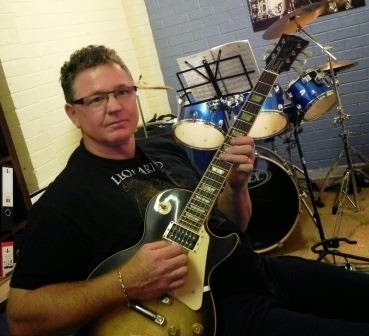 As I enter the last stretch to home, into the cul de sac to my driveway, I can hear the soft sweet drumbeats of a wannabe musician. I go to the front door, as the beats grow in intensity and then, I greet my husband who is surrounded by about 50 decibels of pure noise. Sometimes it’s the drumbeat and cymbals that greet my eardrums; or it can be the strum of a guitar, volume up to maximum pitch with electronic force.
As I enter the last stretch to home, into the cul de sac to my driveway, I can hear the soft sweet drumbeats of a wannabe musician. I go to the front door, as the beats grow in intensity and then, I greet my husband who is surrounded by about 50 decibels of pure noise. Sometimes it’s the drumbeat and cymbals that greet my eardrums; or it can be the strum of a guitar, volume up to maximum pitch with electronic force.I’m telling you this because at the age of around 50, my husband still wants to play in his own band. He’s almost there on Friday nights with the boys belting out a beat; but most just want to relax after a hard week.
He practises every day for an hour. For him, his practice is paramount to his happiness in this world. If he didn’t have it, was not able to release his creativity musically, he would wither and suffer.
It takes me back to my own musical days, in the hazy past of childhood summers when I’d walk up to the convent on a Saturday morning to be whipped into musical shape by an intimidating individual in a wimple. It was a drag having to practise piano. I’d do as little as possible hoping that my fingers would not betray my lack of interest, but of course they always would.
‘Have you been practising?’ Sister Imelda would ask, her bulbous nose unnervingly close to mine, with spit forming in the sides of her mouth. If I admitted I hadn’t, she’d pull my plaits.
‘Yes,’ I’d say. ‘As much as I could this week. I’ve been very busy.’ Protecting my plaits.
‘It’s all about the practice, my dear. Now go do it again.’ I could never get away with it. I guess I didn’t realise that she’d been dealing with lacklustre little girls like me for years. And their plaits. Sometimes, though, I wouldn’t have practised all week and she’d say, ‘Ooh good girl, you’ve practised well this week!’ which would always surprise me and I’d smile and say yes. The plaits were safe.
I pursued music or should I say it pursued me. I’d practise or not, and have my lesson religiously even though it was on a Saturday. The sisters changed from Imelda to Justina who had her stories of ‘the troubles’ in Ireland while she proudly showed off the rubber bullet on her piano.
‘They killed my brother, they did,’ she’d say. I wouldn’t get much tuition that morning.
My sister was always the better pianist. Family and friends would come over as my mother announced, ‘Come on, gather round, Claire is going to play!’ And my sister would burst out a tune, not a care in the world, to rounds of applause. Then they’d say, ‘Come on Robin – you can have a try too.’ And I’d bumble my way through Fur Elise or Study in C, pieces that I would normally play quite well. But not then. It was torture.
I was never destined to be a great pianist. I wonder why not? Let’s see. If I calculate that I had a lesson a week for most school terms from age 8 to 17, nine years, that’s about 450 hours. So nowhere near 10,000 hours! If I’d practised 40 hours a week for five years, I might have been great. But that was never going to happen.
The people who have ‘natural’ talent have spent double that time practising their art. Now that’s what I call passion; persistence in the pursuit of perfection.
My hubby’s been learning music for three years and has notched up around 1,000 hours – he has only 27 years to go to get to perfection. But then I think to myself – maybe it’s not about perfection. Maybe it’s just about the passion, the inspiration, the joy.
So my message to him – and to everyone – is never stop finding your joy.
Published on April 13, 2014 00:19
July 30, 2011
Move fast and break things
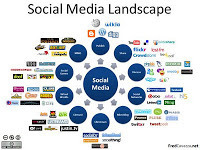 My brief was to join a focus group which would research social media to decide whether it would be practicable to use it within my workplace, a State government department. There started my particular interest in social media. I was already hooked on Facebook, had a profile on Twitter (as myself, as President of Society of Editors (WA), and as the self-titled Communications Manager of my husband’s small business, The Water’s Edge) and I had a profile on LinkedIn, and this blog, Birdwater. I was immersed in the media without really knowing why, how it could benefit me, or if so desired, it could bring in revenue. My work brief elevated my research to a higher level and my research took me to many different sites, online marketers and social media consultants, and an array of personal opinions, and self-taught experts. If these people were so-called experts in a media that had feasibly only been around for the last five years, why couldn’t I learn it and become one too?
My brief was to join a focus group which would research social media to decide whether it would be practicable to use it within my workplace, a State government department. There started my particular interest in social media. I was already hooked on Facebook, had a profile on Twitter (as myself, as President of Society of Editors (WA), and as the self-titled Communications Manager of my husband’s small business, The Water’s Edge) and I had a profile on LinkedIn, and this blog, Birdwater. I was immersed in the media without really knowing why, how it could benefit me, or if so desired, it could bring in revenue. My work brief elevated my research to a higher level and my research took me to many different sites, online marketers and social media consultants, and an array of personal opinions, and self-taught experts. If these people were so-called experts in a media that had feasibly only been around for the last five years, why couldn’t I learn it and become one too? It is within this arena that I pose a few questions:• What is meant by participatory media?
• How does the concept of participatory media affect working within a public sphere?
• What is authorship in a world of ‘prosumers’?
IntroductionBy using Mark Zuckerberg’s quote as the title, I’m certainly not holding him up as a guru to be worshipped in this space. I’m merely noting that trends, ideas, and technological platforms change almost daily in the so-called blogosphere and it is a constant task keeping up with new the information, blogs, websites, and applications that are available.
• What is meant by participatory media?Over the last few years with the advent of Internet and the emerging global digital culture, and more recently the adoption of Web 2.0, the online platform has developed into what some call a ‘participatory media culture’ including the professional sectors of journalism, advertising, marketing, communications, and public relations. What this means is that professional amateurs (pro-ams) have been able to interact online with existing content creators. This first happened by posting comments, interacting with online forums or wikis, then by blogging in their own name or acting as a guest blogger, and more recently by actively publishing on participatory or news aggregation websites or blogs. The blog (web log) started off generally as a one-to-many platform but increasingly acts as a many-to-many gateway with contributors who co-create.
Dan Gillmor (2002) in his own weblog eJournal said: ‘In the 10 years since its mass adoption, the Web has quickly become a reflection of our elaborate social networks. It has evolved into a powerful medium for communication and collaboration, as evidenced by the hypertext links of more than 10 billion documents authored by millions of people and organizations around the world.’
Bowman and Willis (2003) say, ‘It is the greatest publishing system ever known, and it keeps growing. In May 2003, there were at least 40.4 million Web sites with thousands being added, moved or removed every day. It’s a phenomenally extraordinary achievement, which has emerged without central planning and with¬out government regulation, censor or sanction — an emergent, bottom-up process (p 15). They add that ‘estimates of the number of active weblogs vary widely from 500,000 to as high as 1 million. According to the Pew Internet & American Life Project, more than 8 million U.S. Internet users (7 percent) have created a weblog and 90 mil¬lion (84 percent) have participated in online groups’ (p 17).
More recently, Wikipedia states that as of 16 February 2011, there were over 156 million public blogs in existence, growing in number each day.
While reporting, whether it be reporting news, celebrity gossip and events, or posting one’s own ideas and opinions, was once determined as upstream or downstream communication (effectively the wise all-knowing media company would provide the information), it has developed into a two-way symmetrical ‘citizen journalism’. Bowman and Willis (2003, p 9) describe citizen or ‘participatory journalism’ as:
The act of a citizen, or group of citizens, playing an active role in the process of collecting, reporting, analyzing and disseminating news and information. The intent of this participation is to provide independent, reliable, accurate, wide-ranging and relevant information that a democracy requires.
In his 2002 book The Deviant’s Advantage, Wacker identifies what he calls ‘abolition of context’. He says this comes about with rapid change in technology and the effect it has on society. Once change inexorably occurs at the rate it is now happening, it is difficult for organizations and the society at large to find reference points that were once easy to identify. This is all too reminiscent for us with the advent of Web 2.0 and the interactivity of consumer and producer. No familiar reference points such as age, location, cultural background can be established which make this online world a global community. Blogs ‘allow their users to hide those social markers, such as age, gender, and ethnic origins, which often inhibit subordinated social groups from participating in public debate’ (Lister 2011). It’s open slather online, albeit with guidelines.
In 2002, Wacker believed, ‘Context is the framework, the structure, the collective common understanding that allows us to live our lives and run our businesses. Take it away and it’s all but impossible to know what’s the right or wrong ac¬tion to take.’ The nascent Internet and online world has developed since then, and there is arguably a new common understanding being developed for society to act in new contexts.
ExamplesAn example of a participatory news site is . The slogan for the site is ‘crowd powered media’ and ‘the news is now public’. This is taken from the site’s ‘About’ page:
NowPublic is a multimedia online news magazine where you can make, break, shape, and share international news as it happens. NowPublic offers its 5 million monthly readers a unique hybrid of content, context and conversation. Articles on the trending issues of the day are written and assembled by contributors who provide relevant background, photos, videos and Tweets needed to understand and join the digital dialogue. NowPublic’s reporters file stories from 6,000 cities in 160 countries - eyewitness accounts, expertise, and facts with the scope needed to make sense of them.
At first investigation, it might be supposed that the citizen journalist is a tyro writer, randomly posting with little thought to ramifications or online protocols (and no doubt some of these do exist in cyberspace). However, the top sites that celebrate aggregation of content from their audience have strict guidelines for writers. Some of the writers are journalists testing their expertise in different areas. Others are true interested citizens, well informed in their communities. NowPublic has strict rules on defining news, posting a story, best practices, house style, and understanding keywords and trends. Joe or Jane Bloggs would find this daunting. What it does provide is an open media that encourages co-creation and collaboration. This could be called a convergence culture that ‘serves both as a mechanism to increase revenue and further the agenda of industry, while at the same time enabling people – in terms of their identities as producers and consumers, professionals as well as amateurs – to enact some kind of agency regarding the omnipresent messages and commodities of this industry’ (Deuze 2007, p 247).
News aggregation site approaches participatory journalism in a slightly different way by providing links to other blogs and stories by many writers. In this way, the site acts as a referral to approved writers, bloggers and sites which follow their protocols and publish appropriate stories.
Creative writing sites have used the participatory model for some time with sites such as and . These sites allow audience members to offer the next plotline in a story or provide a different ending. Most of these types of sites require the writer to register and write their first post. If that is deemed appropriate, they are accepted into the stable of writers (generally for no fee which is also a bonus for the organization; the writer gets recognition).
• How does the concept of participatory media affect working within a public sphere?Singer (1998) announced the end of the journalist as ‘gatekeeper’ while Bruns (2005) described the journalist as being now more of a ‘gatewatcher’. Deuze (2007) saw that the ‘one-dimensional view of media power has changed, as the agricultural metaphor of production and consumption is increasingly becoming an untenable assumption’ (p 258). The concept of the media as being all powerful has forever changed. Even more in a society where monopoly of the media is de rigueur, powerful individuals can no longer wield that power; it is empowerment for the consumer. The public sphere debate has shifted with individuals now able to build power bases, recognition, influence and followers by representing the ‘small perspective’; those perspectives that the conglomerates had no time or budget to indulge in. ‘The public sphere is already “infected” with group interests… In a “globalised” world the media has largely taken the place of the old public sphere meeting places where citizens would gather to hear information, debate ideas or courses of action, or voice their dissent’ (Study Guide, p 29). The public sphere’s ‘infection’ with the interests of the group offers up differing perspectives and provides a multi-layered online discourse that is shaking the majors of media in their boots. Society is trending back to the soapbox, the public meeting places where every little person could have a say. The soapbox is now online.
The participatory contexts available online include discussion groups, forums, message boards, mailing lists, chat rooms, instant messaging, news groups, blogs, Facebook profiles and pages, videoblogs, podcasts, and wikis. Within these larger frameworks sit concepts such as ranking, polls, quizzes, mini forums, posting to blogs, comments and RSS feeds which all provide an avenue for distributed discussion allowing the creator to be publisher, commentator, moderator, writer and documentarian. This ‘publish then filter’ concept (rather than the traditional ‘filter then publish’ paradigm) has an immediacy and intimacy which whether synchronous or asynchronous is a very powerful tool for the participatory audience. The best sites have a mediated public and have four unique properties (adapted from Boyd 2007, p 2):
• Persistence. What you say sticks around.
• Searchability. Today's teens can be found in their hangouts with the flick of a few keystrokes.
• Replicability. Digital bits are copyable.
• Invisible audiences.
• What is authorship in a world of ‘prosumers’?In 1980, Alvin Toffler, in his book The Third Wave, coined the term ‘prosumer’ meaning the merging of the roles of producer and consumer. He first discussed the concept in his 1970 book, Future Shock. At the time, he was referring to the mass customization of products, and for businesses to get any continuing profit, consumers would have to become part of the design process because of changing needs. This 40-year-old concept is appropriate to the merging of boundaries between reader/writer, creator/consumer, blogger/audience, journalist/reader and any other dichotomies of relationship on the Internet.
Deuze (2005) says, ‘If the process of telling stories, making meaning and sharing mediated experiences becomes more participatory and collaborative … it becomes crucial to understand the roles of the producer and the consumer as (to some extent) interchangeable and (at the very least) interdependent.’ Nearly seven years on, I think it is unrealistic to try to understand these ever-changing roles in a ‘liquid media’. In a past media environment, understanding may have been crucial. Today, it is the participating that is crucial, the guidelines and protocols which must be followed, and the content created. The journalist, business owner, or media mogul has now become a ‘forum leader, or a mediator rather than simply a teach¬er or lecturer. The audience becomes not con¬sumers, but “pro-sumers”, a hybrid of consumer and producer’ (Bowman and Willis 2003, p 14).
As witness to this online platform of change with its plurality of authorship, mediated but unfiltered writing, and dismembering of the power base that once was a media monopoly, I wonder if Roland Barthes may have been a visionary when he wrote in 1967, ‘We know that in order to restore writing to its future, we must reverse the myth: the birth of the reader must be ransomed by the death of the Author’ (Barthes 1986, p 55).
ReferencesBarthes, R 1986, ‘The death of the author’, in The rustle of language, University of California, Berkeley, pp. 49-55.Bowman, S and Willis, C 2003, We Media, API Media Center paper, <http://www.hypergene.net/wemedia/download/we_media.pdf> , (accessed 19 August 2004), viewed 24 April 2011.Boyd, D 2007, ‘Social Network Sites: Public, Private, or What?’, Knowledge Tree 13, May, <http://kt.flexiblelearning.net.au/tkt2007/?page_id=28>. Bruns, A 2011, Blogs, Wikipedia, Second Life, and Beyond, From production to produsage: research into user-led content creation, <http://produsage.org/>, viewed 24 April 2011.Business Insider, War Room 2011, Facebook strategy revealed: Move fast and break things!, <http://www.businessinsider.com/henry-blodget-innovation-highlights-2010-2>, viewed 24 April 2011.Deuze, M 2007, Convergence culture in the creative industries, International Journal of Cultural Studies, Sage Publications, Los Angeles, London, New Delhi and Singapore, doi: 10.1177/13678779076793.Gillmor, D 2002, ‘Journalistic Pivot Points’ in his weblog eJournal on SiliconValley.com, March 27, 2002, <http://www.siliconvalley.com/mld/siliconvalley/business/columnists/dan_gillmor/ejournal/2946748.htm> viewed 23 April 2011.Lister, M et al. 2011, New Media a critical introduction second edition, <http://cw.routledge.com/textbooks/9780415431613/>, viewed 24 April 2011.Pew Internet & American Life Project 2002, Internet Activities chart, The statistic on weblogging is dated September 2002, <http://www.pewinternet.org/reports/chart.asp?img=Internet_A8.htm>.Toffler, A 1970, Future Shock, Random House, US.Toffler, A 1980, The Third Wave, Bantam Books, US.
BibliographyBauman, Z 2000, Liquid Modernity, Polity, Cambridge.Boyd, DM & Ellison, NB 2007, Social network sites: Definition, history, and scholarship. Journal of Computer-Mediated Communication, 13 (1), article 11, <http://jcmc.indiana.edu/vol13/issue1/boyd.ellison.html >.Burns, A 2008, Citizen Journalism – the latest innovation?, MC Journal Vol. 11, No. 1, <http://journal.media-culture.org.au/index.php/mcjournal/article/viewArticle/30>, viewed on 24 April 2011.Byrne, D 2008, The Future of (the) 'Race': Identity, Discourse and the Rise of Computer-mediated Public Spheres, MacArthur Foundation Book Series on Digital Learning: Race and Ethnicity Volume, pp. 15-38, MIT Press.Cohen, NS and Shade, LR 2008, Gendering Facebook: Privacy and commodification, Feminist Media Studies, 8 (2), 210-214. Ellison, NB, Steinfield, C, & Lampe, C 2007, The benefits of Facebook “friends”: Social capital and college students' use of online social network sites, Journal of Computer-Mediated Communication, 12(4), article 1, <http://jcmc.indiana.edu/vol12/issue4/ellison.html>. Hall, S 1992, ‘Introduction: Identify in question’ and ‘The birth and death of the modern subject’, in S Hall, D Held and T McGrew, Modernity and its Futures, Polity Press and Open University, Cambridge, pp 294-295.Kovach, B and Rosenstiel, R, 2001, The Elements of Journalism: What Newspeople Should Know and the Public Should Expect, Three Rivers Press, p 24.Laclau, E 1990, New reflections on the revolution of our Time, Verso, London, New York.Pew Internet & American Life Project 2001, Online Communities: Networks that nurture long-distance relationships and local ties, October 31, 2001, <http://www.pewinternet.org/reports/toc.asp?Report=47>.
Wacker, W 2002, The Deviant’s Advantage, Crown Publishing.
Published on July 30, 2011 03:24
March 13, 2011
She's there, a song on the wind
The boys mind the bags
While lesbians and straight girls danceKiss your boyfriends and keep the women happyMinor melodies are warped in dominanceAnd two black singers under pressure
You’re too young to sit still, he saysWith two guitars but he doesn’t sing, chewingMrs Santana on the drums with the AfroFingers like noodles on guitarShe’s open mouthed, sticks a whirrWhile her hair jumps to the roll of the drum
Smooth and soft, now claps encourageUnrelenting sticks on canvasHard and knockingHer hair out of fashionRhythm with a style of its ownSkinny with diamantes, beltedAnd gone.‘Witness the getting togetherWhen things are at their worstThe best happensCast off your skin of religionBe a familySince Woodstock we are oneHeal our fears with love, twisted simplicityAnd choose between love, or fear, or fire’.
Guitar’s extension of pleasureStroke it, slide and strokeThe garden of destinyWith light and loveAnd sunshine so long.
While lesbians and straight girls danceKiss your boyfriends and keep the women happyMinor melodies are warped in dominanceAnd two black singers under pressure
You’re too young to sit still, he saysWith two guitars but he doesn’t sing, chewingMrs Santana on the drums with the AfroFingers like noodles on guitarShe’s open mouthed, sticks a whirrWhile her hair jumps to the roll of the drum
Smooth and soft, now claps encourageUnrelenting sticks on canvasHard and knockingHer hair out of fashionRhythm with a style of its ownSkinny with diamantes, beltedAnd gone.‘Witness the getting togetherWhen things are at their worstThe best happensCast off your skin of religionBe a familySince Woodstock we are oneHeal our fears with love, twisted simplicityAnd choose between love, or fear, or fire’.
Guitar’s extension of pleasureStroke it, slide and strokeThe garden of destinyWith light and loveAnd sunshine so long.
Published on March 13, 2011 23:02



